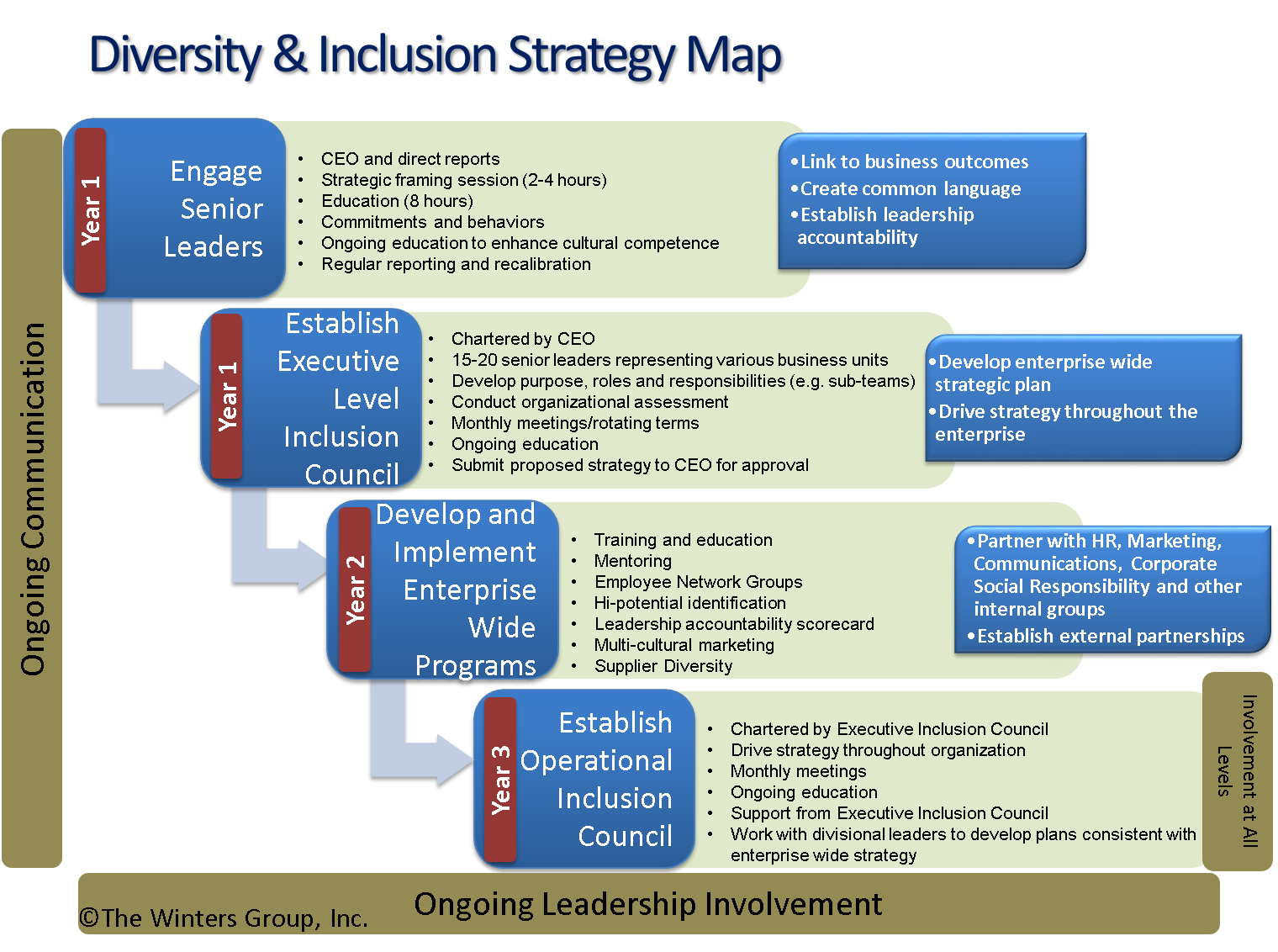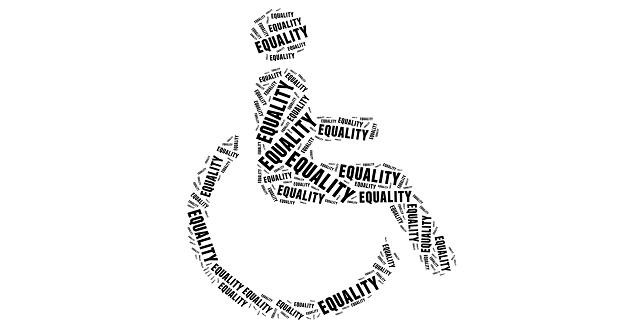 Last week The Inclusion Solution focused on how to get leadership engagement, highlighting key distinctions between commitment and engagement. This week, we will explore what’s next.
Last week The Inclusion Solution focused on how to get leadership engagement, highlighting key distinctions between commitment and engagement. This week, we will explore what’s next.
As we mentioned in part 1, developing and implementing a sustainable diversity and inclusion process takes time. It may appear that you are just inching along, which can be frustrating. However, the time you spend up front ensuring that leaders are truly onboard, will bode well for the future.
Once you have the top of the house engaged (which can take up to a year or more), you can begin to engage the rest of the organization. A top-down, bottom-up approach will support your goal of sustainability.
Many organizations make the mistake of trying to implement programs such as training, employee resource groups and mentoring before the senior leadership team is on board. This approach will not only be extremely frustrating for the top diversity professional, but also for employees who are participating in some of the programs. For example, if leaders are not committed and engaged, they may not support their employees’ involvement in diversity and inclusion activities.
The Winters Group 3 year approach shows an order to implementing diversity and inclusion strategies that will increase the likelihood of sustaining your efforts.

A Case Study
Blue Cross Blue Shield of Michigan (BCBSM) used the three year road map to devise an effective strategy to integrate inclusion at all levels one “tier” at a time. In the first year of the diversity and inclusion initiative, then Chief Diversity Officer Equilla Wainwright established a Diversity Leadership Council (DLC) comprised of senior vice presidents from each business unit. They were charged with developing a three-year strategic plan for the enterprise. The group met monthly, was exposed to experiential education to enhance all members’ cultural competence, and spent time developing the strategic plan. By the end of one year, these 18 leaders were committed, engaged and ready to implement the strategy that they had developed on an enterprise-wide level.
The next stage involved identifying Champions, primarily middle managers, who would tailor and implement the enterprise-wide strategy divisionally. This new council comprised of the Champions had the DLC members as advocates and resources to support them in the implementation of their plans.
Divisional plans focused on the more “micro” elements of inclusion to ensure that the initiatives were cascading throughout the organization and executed by those closest to the issues. Measurable actions include incorporating diversity and inclusion into the agenda of every team meeting, requiring diverse slate of candidates for every opening, encouraging participation in employee resource groups, devising strategies to ensure more voices are heard, and increasing team involvement in the community.
BCBSM conducted enterprise wide surveys and focus groups to ensure inclusion in the process and also widely communicated progress to all employees, soliciting their input at every major juncture.
BCBSM’s top-down bottom-up approach has ensured a critical mass of competent diversity advocates are seeding inclusion principles throughout the organization.

















